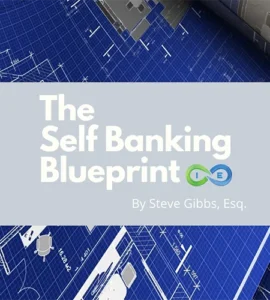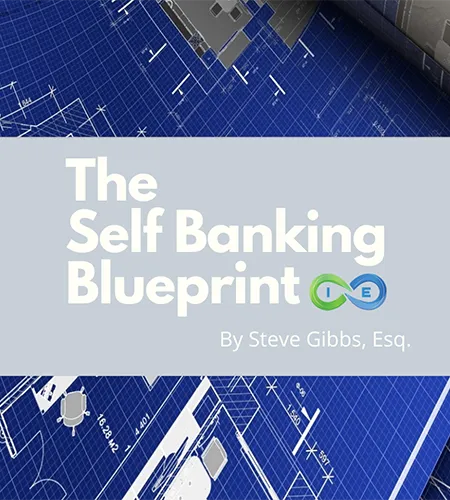At Insurance & Estates, we focus on maximizing your cash flow so you can free up as much money as possible to live financially free. Through the use of a home base for your liquid assets in properly structured whole life insurance you can increase your return on your assets, in a tax favored environment, that also maintains many creditor protections based on your specific state’s laws.
In the following article we will discuss cost segregation and how faster depreciation can provide you with additional cash flow in the early years, so you can best utilize your money, rather than unnecessarily keep it stagnant.
It intuitively makes sense to view a real estate acquisition as the purchase of a single asset. After all, the sale contract and deed probably lumped together the land and the buildings – and all components of the buildings – and specified a single purchase price.
But, although thinking of everything as just one asset simplifies the transaction, for tax purposes, it’s often better to consider a real estate purchase as the sum of its parts. And that’s where cost segregation comes in.
What is Cost Segregation?
Cost segregation is the process of separating tangible personal property and land improvements from the land and building itself. Not physically separating, though – separating for accounting purposes.
Cost segregation can be advantageous because the federal tax code provides different, shorter depreciation schedules for tangible personal property (five or seven years) and land improvements (fifteen years) than for building structures (thirty-nine years). (1)
The shorter depreciation schedules mean that, for the portion of a property that can be classified as “tangible personal property” or “land improvements,” the taxpayer receives greater depreciation deductions early on and therefore has a lower overall tax bill and an accompanying increase in cash flow.
But to take advantage of the shorter depreciation schedules, you have to demonstrate what portion of the purchase price is actually attributable to personal property and land improvements.
As the IRS itself puts it in an advisory opinion, cost segregation “may not be based on non-contemporaneous records, reconstructed data or taxpayers’ estimates or assumptions that have no supporting records.”
Because the IRS won’t take your word for it, you will need a thorough, detailed, and well-documented cost segregation study from a qualified professional.
How Does a Cost Segregation Study Work?
A cost segregation study is an “engineering-based” report prepared by a specialist with knowledge of construction engineering, accounting, and tax laws.
After thoroughly examining a property’s individual components and systems and reviewing architectural plans and blueprints, the specialist prepares a report dividing all of the components of the entire property into four categories: land, land improvements, building components, and personal property.
The report specifies the percentage of the total purchase price comprised of each category.
A high-quality cost segregation report is well-documented, values each of the individual items within each category separately, and keeps estimation to a minimum.
Differentiating between tangible personal property and building components is the most difficult aspect of a cost segregation study. The distinction is not always clear and has been the subject of substantial tax court litigation.
IRS regulations essentially define “tangible personal property” as all property within or attached to a building that is not land or the building itself or part of the building’s structural components. (2)
Under Treas. Reg. § 1.48-1(e)(2), “Structural components” are items which “relate to the operation or maintenance of a building.”(3)
The IRS points to printing presses, transportation and office equipment, and refrigerators as examples of personal property, with walls, floors, and plumbing and lighting fixtures listed as examples of building components.
What it usually comes down to is whether the item is inherently permanent, as opposed to easily removable. The IRS suggests that, when deciding whether an item is personal property or a building component, taxpayers look at its mobility, expected useful life, and physical means of attachment, along with a few other similar factors. Items which are easily mobile, not permanently attached, and have a shorter useful life are more likely to qualify as personal property.
Carpeting, for example, is expected to be periodically replaced and can be removed without doing any damage to the building, so carpeting is considered personal property. HVAC duct work, though, generally will not be moved once it is installed, so it’s usually considered a building component.
Function alone is insufficient to make the distinction. A chest freezer, for instance, will almost certainly be personal property, whereas an attached walk-in freezer is likely to be seen as a building component. Fortunately, the tax courts have already issued rulings on numerous items, and an experienced CPA will be familiar with the existing precedent and use the prior rulings as guidance.
Identifying land improvements is generally much simpler than differentiating between tangible personal property and building components. Land components are exterior items which are not attached to a permanent structure and tend to be less permanent. Fences, swimming pools, and stand-alone decks are examples of land improvements.
Cost Segregation Analysis
After the cost segregation report has been prepared, it is analyzed by a CPA, who identifies areas for potential tax savings based upon the reclassified items and their valuations. The focus of the CPA’s review will be the tangible personal property and land improvements because assets within those categories can be depreciated on a shorter schedule.
Personal property and land improvements tend to have a shorter shelf-life and therefore depreciate over 5-7 and 15 years, respectively, while building components are depreciated over 39 years, and land cannot be depreciated at all.
To maximize tax savings, personal property items and land improvements are generally valued as highly as can be reasonably substantiated. The higher the percentage of the purchase price attributable to personal property and land improvements, the greater the depreciation deductions available to the taxpayer.
On the other hand, the land itself cannot be depreciated, so the percentage of the purchase price attributed to land should be kept reasonably low. There are penalties for unjustifiable valuations, though, so the figures should have a sensible rationale.
Although all building components depreciate over the same 39-year schedule, a separate valuation of each individual component can lead to additional tax benefits. This is because, if separate values have been assigned, the taxpayer can write off a component if it ever becomes worthless.
So, for example, if a building’s roof was valued at $20,000 in a cost segregation study, in the event the roof needs to be completely replaced in a few years, the taxpayer can immediately write off as a loss the depreciated value of the roof. If the building’s components had not been individually valued, the roof would be tied in with the rest of the building, and so a write-off for the ruined roof would probably not be possible.
How can a Business or Investment Property Owner Benefit from Cost Segregation?
The benefits of cost segregation primarily arise from the idea of the “time value of money.” That is, a dollar in your pocket today is worth more than a dollar ten years from now.
Freeing up more money in the present, whether from available depreciation or other means, allow you to control more of your cash. You are then freed up to use more of your money in the present, rather than be subjected to the opportunity cost of having all your money needlessly tied up.
The velocity of money and cash flow are two very important concepts for investors looking to maximize their potentialities. Because items segregated as personal property or land improvements can be depreciated more quickly than the building itself, the property-owner receives larger depreciation deductions early in the life of the property. The increased deductions lead to a lower overall tax bill which, in turn, translates to increased cash flow. The extra near-term cash can then be invested in other projects or put back into the property to increase its value.
Straight-Line Depreciation
The alternative to cost segregation is “straight-line” depreciation of the entire structure over 39 years (or 27.5 for residential properties, though cost segregation is much more commonly used with commercial properties). Over the full 39-year period, the aggregate depreciation deductions will be similar to what can be achieved through cost segregation, but the time-value of the front-loaded deductions and the possible effects of inflation on the long-term value of the deductions make cost segregation a valuable accounting tool.
Cost Segregation Pros and Cons
Of course, there are some drawbacks to cost segregation. Most notably, hiring a qualified specialist to conduct an engineering study is not cheap. The actual cost varies depending on the nature and location of the property, with a typical range in the neighborhood of $10,000 to $25,000. For businesses, the cost of the report is a deductible business expense, and the idea is that the near-term tax savings make up for the report cost.
CPA’s generally maintain that cost segregation becomes cost-effective when the purchase price for the property is $750,000 or greater. At that price point, even if only a relatively small percentage of the purchase price can be segregated as tangible personal property or land improvements, the tax savings early in the life of the property should be more than sufficient to cover the cost of the study. It goes without saying, though, that each property has its own unique character, so the actual savings realized can vary considerably.
In general, the best outcomes are seen with new constructions, as “bonus” depreciation may be available for properties in their first year of service. However, for older buildings, a cost segregation study can identify deductions that can be applied retroactively, with retroactive deductions for recaptured depreciation available for the first year after the study is performed, even if the property has already been sold by the taxpayer.
The previously unrecognized depreciation can usually be deducted on the taxpayer’s current year return without amending prior returns, though the taxpayer does need to notify the IRS of the change in accounting method.
A secondary benefit of cost segregation is that it enables the property-owner to write off individual building components needing replacement if and when the component fails. When the report is prepared, each component is assigned its own tax basis and is no longer co-mingled with the basis of the building as a whole.
As a result, the costs of a major structural repair can be partially offset by an immediate write-off of the component’s depreciated value.
Cost segregation can also help to reduce local transfer and real estate taxes by leading to an adjustment in the building’s appraised fair market value.
And, in the estate planning context, cost segregation can result in favorable tax treatment for estate taxes and a decedent’s final income tax return.
Many commercial property owners mistakenly view cost segregation as a high-risk tax strategy likely to cause problems with the IRS. However, reliance upon a professional, detailed, and well-documented engineering-based study removes nearly all of the risk.
Rather than a means of avoiding taxes altogether, cost segregation is a real estate wealth building strategy for taxpayers to take advantage of near-term tax savings by accurately evaluating the composition of an acquisition and identifying more rapidly depreciating assets.






4 comments
Ricardo Fojas
Another cpa lawyer said that the problem with cost segregation are:
1) Need to be a realty professional
2) cost of doing cost segregation
3) Problem of depreciation recapture
What do you say about that?
Insurance&Estates
Hi Ricardo, I wouldn’t be inclined to argue with a CPAs opinion on this as we really aren’t attempting to sell anyone, but rather just educating folks on this option. That said, if you’re considering this I would want to explore whether that CPA/lawyer’s understanding is accurate by getting more than one expert opinion. Best of luck in your education process.
Steve Gibbs for I&E
anil rastogi
need to evaluate an office building for Cost segergation.
Insurance&Estates
Hello, while we write about this topic, we don’t have a cost seg expert on our team however Barry Brooksby has been heavily involved in real estate and may know of someone. You can connect with him at barry@insuranceandestates.com.
Best, Steve Gibbs for I&E